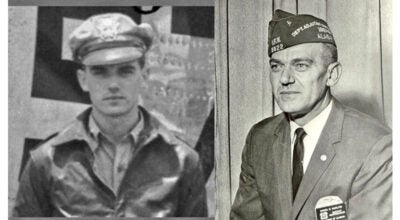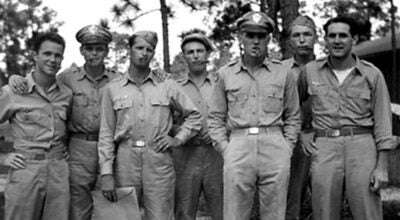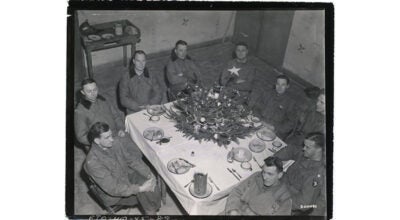Andrew Douglas Franklin, Sr., Tech/Sergeant, U.S. Army Air Corps, WWII Prisoner of War – Part 1
Published 1:00 pm Friday, July 14, 2023
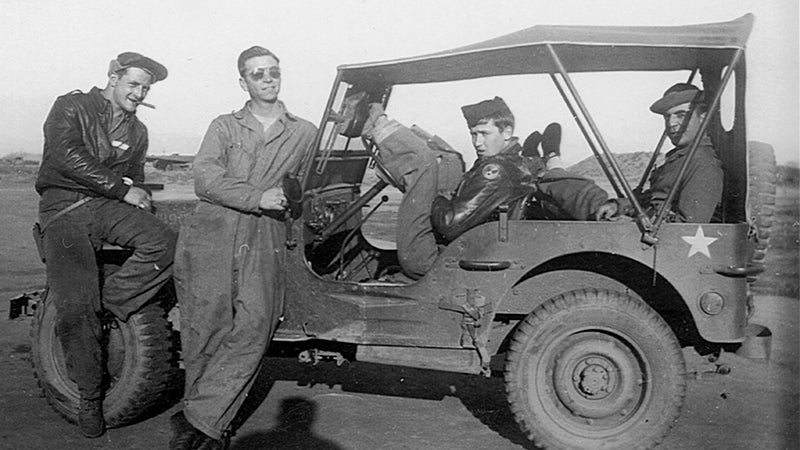
- L-R, Kenneth Kendle, Douglas Franklin, Robert Jankovsky and Frank Lamartina at Hammer Field, California. [Photo: Allan Franklin]
|
Getting your Trinity Audio player ready...
|
Sgt. Douglas Franklin and his crewmates on the B-24 Liberator bomber, War Eagle, thought they were beginning their 50th flight on the morning of July 24, 1944, when they lifted off from Torretta Air Base in Italy. That 50th flight was the magic number of combat flights that had to be completed before you were rotated back home to the States. For Franklin and the crew, it didn’t happen that day because they were told to abort the mission and return to base.
On the morning of July 25, the crew of War Eagle took off again, in anticipation of completing their 50th mission. Their target was the Hermann Goering tank works in Linz, Austria. When they arrived over Linz, the sky was black with flak and German fighters swarmed like bees. The odds of completing that 50th mission looked bleak for the crew of the B-24 named War Eagle.
Author’s note: Losses by the U.S. Army Air Corps during WW II, were among the highest of any American force. More than 52,000 aircrew were killed in combat, another 25,000 or so were killed in accidents, more than half of which happened within the United States. Of the 65,154 planes that were lost, approximately 23,000 were combat losses.
Andrew Douglas Franklin was born September 24, 1922, in the small town of Sanford, Covington County, Alabama. His parents were Marvin Irene Adams Franklin and Dennis Lee Franklin. Douglas had four siblings, Horace Franklin, Ruth Franklin, Donald Franklin and Gladys Franklin. Horace, Donald and Douglas would serve in WW II.
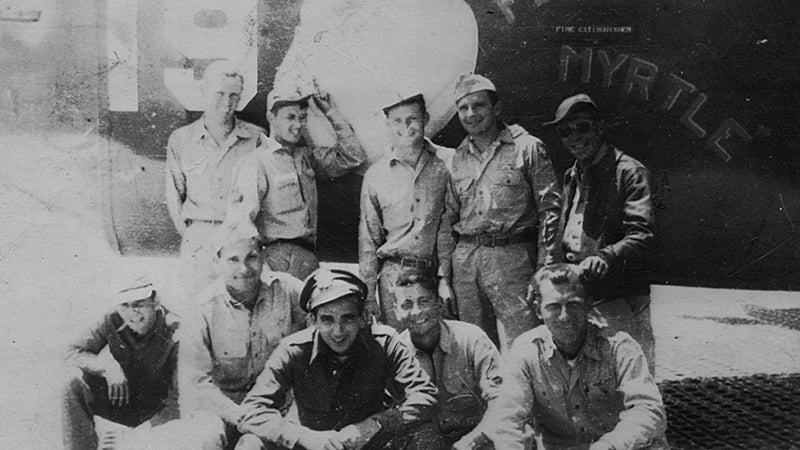
Seven of this B-24 bomber crew beside “Fertile Myrtle” were on the “War Eagle” when it was shot down July 25, 1944, over Linz, Austria, Douglas Franklin is front row, second from the right. Yancey Fulcher, from Geneva, Alabama, is
shown, standing far right with sunglasses. He was the top turret gunner and was killed by German fighter planes before the “War Eagle” crashed. Three members of this crew had rotated out and were back home. [Photo: Allan Franklin]
In October 1942, Franklin enlisted in the Army Air Corps. After completing basic training, he was sent to Engineering School at Willow Run, Michigan. The Willow Run Aircraft Plant was also known as Air Force Plant 31. It was built by Ford Motor Company and began producing B-24 Liberator bombers in 1941. The plant’s assembly line ran until May 1945 and produced almost half of all the B-24s produced.
After completing school at Willow Run, Franklin was sent to the 2nd Aerial Training Group, Laredo Army Airfield, Texas, for gunnery training. From there he was sent to Keesler Army Air Base, Mississippi, for a brief time before going to Wendover Army Air Field, Utah. Wendover was home to the Army Air Corps’ largest gunnery and bombing range.
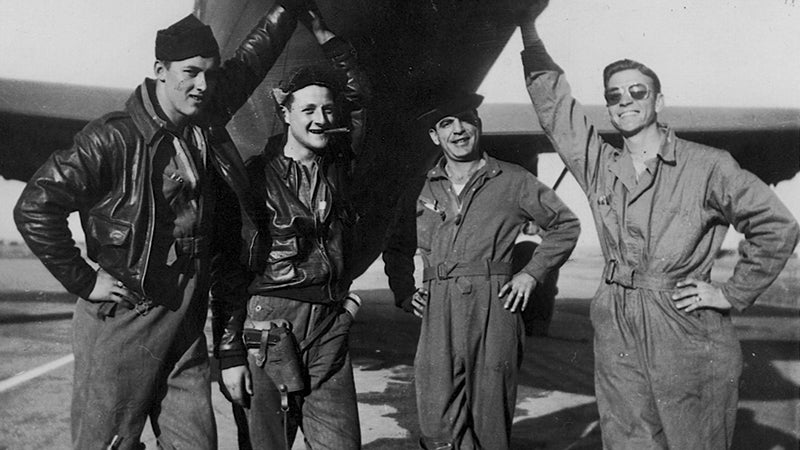
Part of Crew # 2 at Hammer Field, California. L-R, Robert Jankovsky, Kenneth Kendle, Frank Lamartina and Douglas Franklin. [Photo: Allan Franklin]
Franklin and the crew of the Ignatz were ordered to the European theater in late 1943. They flew from Fresno via the southern route, with stops in Texas, Florida, Trinidad, Brazil, Tunisia and Morocco before arriving at the Torretta Air Field in Italy in January 1944. Torretta was part of the Foggia Airfield Complex consisting of multiple Allied air bases in southern Italy.
The Ignatz was one of the newer B-24s and it was ordered to a nearby base to replace an older plane. In February, a skeleton crew of four men took off in the Ignatz to ferry it to the other base. At some point during the flight, the weather turned bad and the Ignatz crashed into the side of a mountain on February 29 [1944 was a leap year]. Three of the crew were killed as well as the squadron commander, Captain Albert Witte, who was onboard. The three crewmen killed were Harold Blanchard, William Maxfield and Frank Lamartino. A fourth crew member, Ansel McNaight, survived but was badly burned.
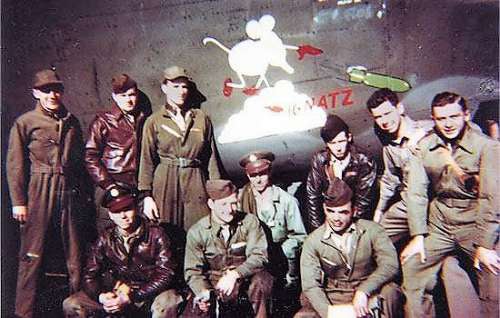
Crew # 2, beside the B-24 Liberator “Ignatz” at Hammer Field, California.
Douglas Franklin is squatting, far left, front row. The “Ignatz” was lost in Feb. 1944, while being ferried from Torretta Field, Italy, to a another nearby base. [Photo: Allan Franklin]
After Franklin’s crew aborted their 50th mission on July 24, they had hoped they would be credited with the flight. The Army Air Corps would not credit that flight and the War Eagle and its crew were given another target for a July 25th mission. Their ill-fated 50th mission would be to bomb the Hermann Goering tank works in Linz, Austria. [end Part 1]
John Vick
More COLUMN -- FEATURE SPOT
